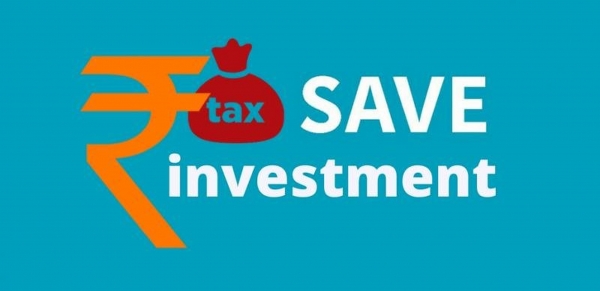Taxes are inevitable. It is one of the most critical tools for a country’s survival. The government collects taxes to assist fund development programs in the country, such as defense, healthcare, and more. Individuals, businesses, and institutions make up the country’s taxpayers. Taxes are unavoidable for anybody who earns and spends money.
Regardless of tax liability, anyone with income above the prescribed basic exemption amount is required to file an income tax return for the fiscal year. You may have several choices for reducing your income tax liability. These are referred to as ‘tax-saving instruments. Don’t worry, because there are always times where you can save up on tax and invest at the same time. Let us find out how.
1) Self Employed Living on Rent – 80GG
Even if you are self-employed or do not receive HRA in addition to your salary, you can still claim a deduction for your house rent. For the fiscal year 2020-21, Section 80GG deduction of the Indian Income Tax Act permits a deduction of up to Rs. 60,000. The deduction is calculated on a monthly basis, with a monthly maximum of Rs. 5000. The amount you can deduct will be the smallest of the following:
- Rs. 5000 per month.
- 25% of total income.
- Amount of actual rent paid over the 10% of income.
2) Insurance – 80C
Life insurance is an important part of an individual’s financial portfolio since it provides security to the individual’s family in the event of an unforeseen disaster. As a result, it is the breadwinner’s major responsibility to obtain life insurance as soon as possible for the family’s protection. Life insurance, whether traditional (endowment) or market-linked (ULIP), provides policyholders with tax breaks on premiums paid.
3) Pension Section – 80CCC
Pension plans are yet another type of life insurance. They serve a distinct purpose than other types of insurance plans, such as term and endowment policies, and are referred to as protection plans. While protection plans are designed to financially safeguard an individual’s family in the event of his death, pension plans are designed to provide for the man and his family if he lives.
Pension contributions are exempt under Section 80CCC (a sub-section of Section 80C) of the Income Tax Act. The total deduction limit under all sub-sections of Section 80C cannot exceed Rs 1.5 lakhs.
4) National Savings Certificate – 80C
National Savings Certificates (NSCs) are a savings bond scheme that encourages mostly low- to middle-income investors to invest while saving income tax under Section 80C. You can buy NSC certificates in e-mode if you have a Savings account with a bank or a Post Office and have access to online banking. NSCs can be purchased by an investor for themselves, on behalf of minors, or as a joint account with another adult.
5) Unit Linked Insurance Plan – 80C
ULIPs are long-term investment products that give you the option of investing in equity funds, debt funds, or both. ULIPs allow you to swap between funds in accordance with your financial objectives. You can save taxes by investing in ULIPs under sections 80C and 10(10D) of the Income Tax Act of 1961.
6) PPF – 80C
The Public Provident Scheme is a popular tax-saving investment vehicle. To get started with this long-term savings and investment plan, you must first open a PPF account at the post office or approved branches of public and private sector banks. Contributions to the PPF account earn a fixed rate of return. On these deposits, you can claim Section 80C deductions of up to Rs 1.5 lakh in a fiscal year.
7) Senior Citizen Certificate – 80C
The Senior Citizen Savings Scheme (SCSS) is a government-sponsored savings mechanism for people over the age of 60 that provides a stable and safe source of income in their post-retirement phase while also offering fairly high returns.
The principal amount deposited in an SCSS account is tax-deductible under Section 80C of the Income Tax Act of 1961, up to a ceiling of Rs. 1.5 Lakh. This exemption, however, is only eligible under the current tax scheme. It is not permitted if a person chooses to file tax returns under the new method announced in the Union Budget.
How can you Plan your Investments to Enjoy these Tax Benefits?
The tax-saving season begins on April 1 for both salaried and non-salaried taxpayers. A good tax-saving investment should not only give tax exemption but also generate tax-free revenue.
Rather than waiting until the end of the fiscal year and choosing ad hoc tax-saving tools, it would be a wiser way to begin investments in the early quarters of the fiscal year so that taxpayers may plan their investments and reap maximum benefits. When deciding on the best tax-saving investing strategy, consider factors such as fund safety, liquidity, and return size.
Most tax-saving investment schemes fall under Section 80C of the Income Tax Act, which allows the taxpayer to claim an exemption of up to Rs 1,50,000. ELSS (Equity Linked Saving Scheme), Public Provident Fund, Life Insurance, National Savings Scheme, Fixed Deposits, and Bonds and irs installment agreement payment are some of the alternatives available to investors.
Conclusion
You can own as many tax-free investments as you need, and there is no limit to it. But you should also remember there is a limit to the deduction under which you can claim these tax benefits. Also, this is just a gist of a big subject, so go on and refer to different sections of the Income Tax Act.

